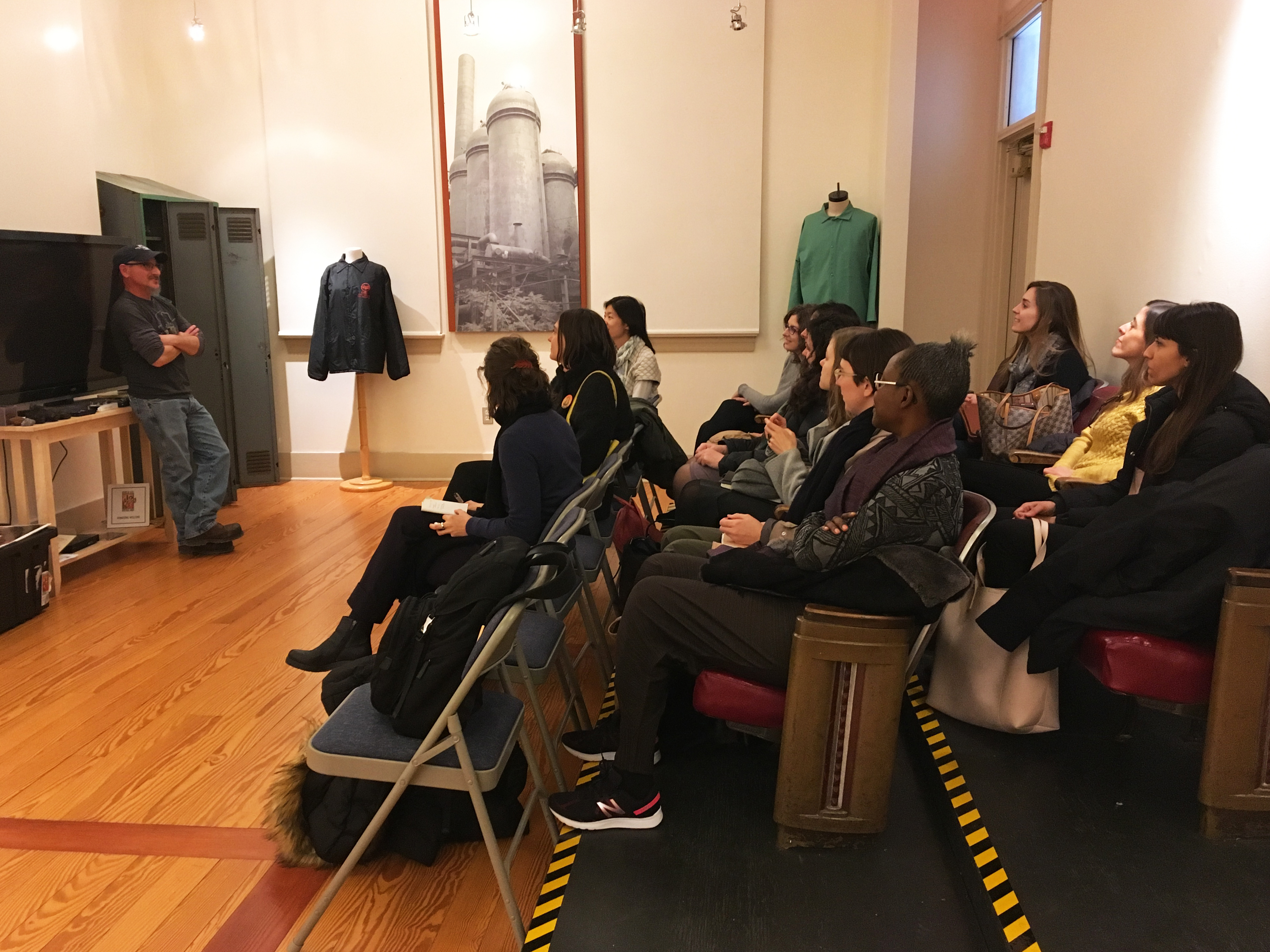Author: Rebecca Giordano
PhD Student in History of Art and Architecture
As a student in HAA professor Jennifer Josten’s Contemporary Art on/and Display graduate seminar I have had the pleasure of attending several events and seminars with Koyo Kouoh, exhibition-maker and founding artistic director of RAW Material Company, a contemporary arts space in Dakar, Senegal. Kouoh is participating in the 57th edition of the Carnegie International, set to open in October 2018, by mounting an intervention in the museum based on its permanent collection and the history of the International. During her ten-day residency in Pittsburgh we have had the opportunity to hear about Kouoh’s practice from a variety of perspectives. In a public brown bag lunch discussion, organized in collaboration with the Pitt Global Studies Center’s Creative Pedagogies Initiative, Kouoh emphasized RAW Material Company’s education programming including the evolution and emergence of RAW Académie. This program is an intensive 8-week artist-led workshop centered around different themes for recent graduates interested in developing an understanding of art practice as a system of thinking. Kouoh and her collaborators identified a need for critical development and professional growth for artists and cultural producers who are in that vulnerable place right after graduation and trying to find their footing. RAW Académie aims to remedy those gaps and draws artists, critics, and curators from around the world and from Dakar to foster new networks and cross-cultural dialogues.
Our conversations continued after lunch in our class meeting with an emphasis on Kouoh’s exhibitions both in Senegal and around the world. Hearing from Kouoh firsthand about her practice and specifics about the different manifestations of her core concerns—what she calls an “obsession with digesting colonialism”—provided interesting case studies for thinking about how display with its colonial histories, baggage, and expectations can be reimagined to press forms beyond colonial thinking. Insisting that art is a system for thinking in and of itself, Kouoh figured the making of an exhibition as a way of producing new knowledge through display and dialogue. Kouoh’s dedication to providing art a space in civil society came through clearly. Rooted in Dakar’s love of discourse, RAW provides a place for the public to have critical discussions about visual art and actively positions art as a part of political and civic life.
In a public lecture and conversation on Thursday, January 25, Kouoh drew out more of her commitment to building an innovative contemporary art institution like RAW. She addressed the changing nature of “the curator” and the ways this term shifts in different languages and places as well as the ways it ties to different systems of cultural production including colonial hangovers. For many of the students in the class, these questions about the nature and breadth of a curator’s work, how these roles shift geographically and historically, and how they bear ethical and political weight are central to our consideration of how the contemporary is produced through exhibition-making and collection-building. Primed by an excellent class visit the week before by Carnegie International curator, Ingrid Schaffner, and, associate curator, Liz Park, the Carnegie International’s history and future was certainly present in our discussions.
Five students in the seminar (including myself) are now aiding Kouoh and her team in researching, designing, and developing Kouoh’s exhibition, Dig Where You Stand. To kick off our contributions, we joined Kouoh and Park on visits to the Braddock Carnegie Library and the Rivers of Steel National Heritage Area to think more about how Pittsburghers are digging where they stand. These opportunities usefully intertwine the content of our class, which asks us to think about the meaning of display and the construction of the category of the contemporary, with working directly with curators who are enacting these ideas in real time. More than just thinking critically about the end product of the exhibition process—a useful endeavor, of course—we get to trace and put to use these ideas as they unfold in different stages of an exhibition’s development.
Learn more about the Collecting Knowledge Pittsburgh initiative here


